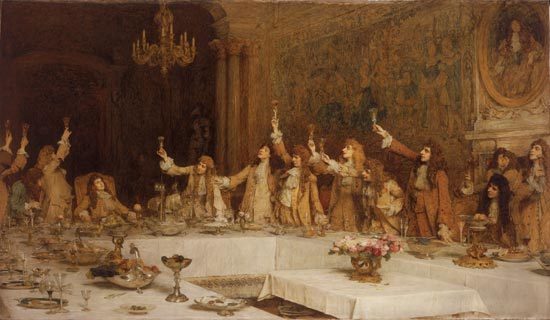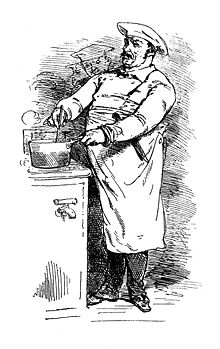François Vatel

Monsieur François Vatel (1631-1671) is considered a famous French chef and was in the service of the Prince of Condé. As chef and organiser of presentation and performance (today's term: serving master / master of ceremonies), he was responsible for the aristocratic banquets. In addition to opulent serving, this also included show performances and themed meals with fireworks and artistic background music.
François Vatel had special jugs and plates made of clay bearing the coats of arms of guests at the court of the Bourbons as early as around 1670 - around 100 years before the discovery of Limoges porcelain around the town of Haute-Vienne (France). According to records, he himself influenced the shape of the hollow and flat parts in order to achieve a special function for the presentation and to enable easy covering by stacking the dishes.
After the great feast in honour of King Louis XIV in 1671, Vatel took his own life because he had not succeeded in the art of presentation in such a way as to win the praise of the Sun King. As an F&B manager today, one would realise that the budget for this banquet, estimated at 600,000 Écu for 3,000 participants, required a goods-optimised calculation and thus price and performance were in harmony! At all the courts of the nobility in Eastern, Central and Southern Europe, high-quality porcelain matured into the element of presentation for large banquets and festive tables.
Restoration & Porcelain

(Image rights: Wikipedia)
With the French Revolution, the unlimited spending spree of the tax-paying nobility and royal court came to an end, and chefs had to find new sources of income. They opened restaurants that catered to the wealthy bourgeoisie.
Therefore, in the 19th century, French culinary art recovered from revolution and crises. The rising bourgeoisie gradually democratised cuisine as well, with successes and setbacks. During many decades, the most famous chefs often came from France. Bocuse, the Troisgros brothers and Marc Haeberlin, for example, were all students of Fernand Point.
They propagated a cuisine that transformed fresh, high-quality food from the regions of their own country into refined, well-arranged, tasty table delights. Nouvelle cuisine was based on similar ingredients to diet cuisine: vegetables, steamed meat, little fat. Students of Bocuse - such as Eckart Witzigmann - also spread this doctrine in Germany. With the Biedermeier era around 1815, porcelain began to make its way into the bourgeois social classes in Europe and only experienced its triumphal march onto the tables of all estates and income classes late after the Second World War.
Our realisation stems from this historical insight: porcelain is a tool of the kitchen.
